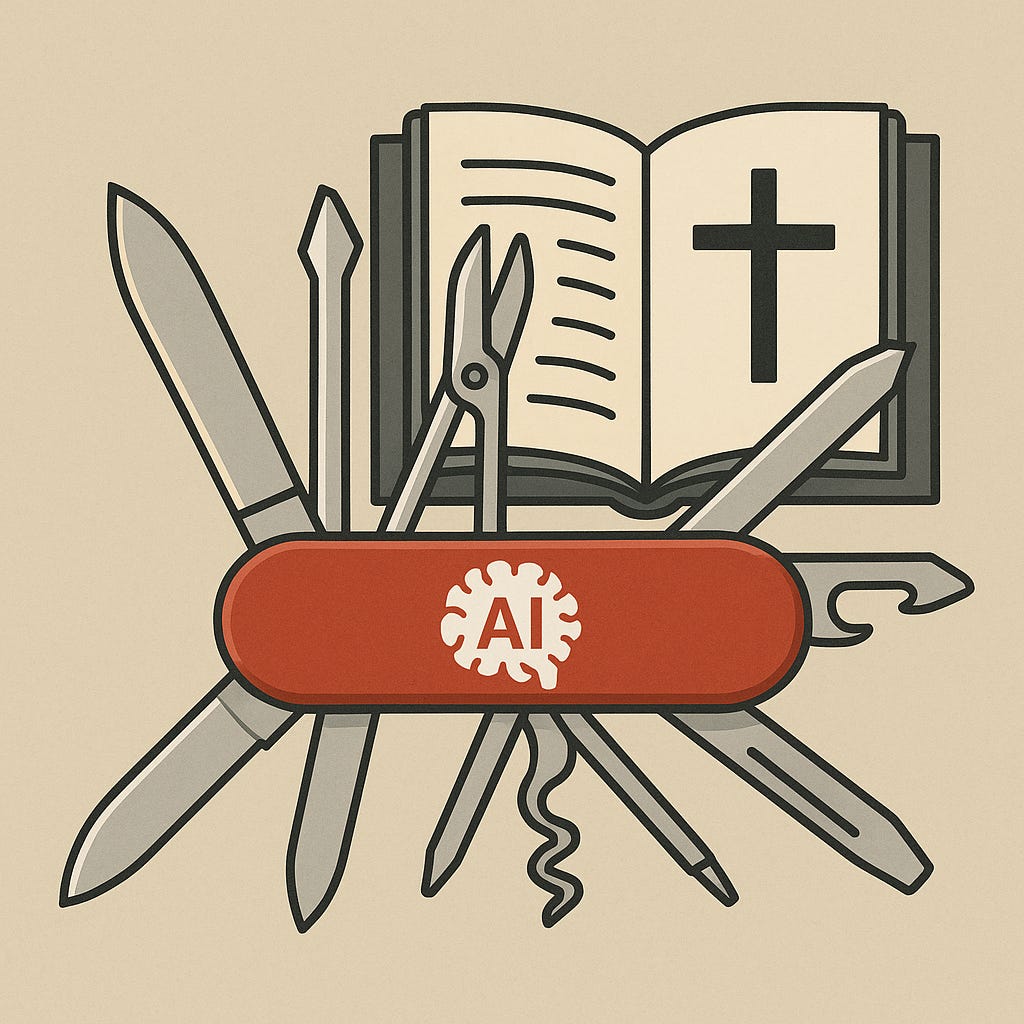From Many Tools to Meaningful Work
The Spiritual Challenge of Everyday AI
AI’s evolution from novelty to necessity invites us to discern not how much we use, but why. And to what end.
Patterns in the Age of Personal AI
Over the past months, a steady current has run beneath our conversations about artificial intelligence: AI is no longer a futuristic add-on—it is interwoven into the daily fabric of life. Posts like yesterday’s The Swiss Army Knife of 2025 illustrate that we have moved into a season where the abundance of AI “blades”—assistance, organization, creativity, emotional support—demands less technical understanding and more intentional integration.
Yet one question recurs: If AI is everywhere, what guides its use? What makes this technological arsenal truly serve our flourishing, rather than fragmenting our attention or obscuring our purpose?
“The danger isn’t overuse or underuse; it’s unconscious use. Many of us carry a full toolkit yet reach for the same dull edge day after day.”
From Feature Fatigue to Disciplined Stewardship
A pattern surfaces from recurring reports and user habits is this: we possess more features than focus. It’s a phenomenon crystallized as “feature fatigue.” We are surrounded by technology that purports to help us grow, connect, and create, but the mere presence of tools does not guarantee their wisdom in use. The problem, increasingly, is not technical but spiritual. Will we choose constraint, reflection, and intentionality, or be swept up in the endless cadence of automation for its own sake?
Keep reading with a 7-day free trial
Subscribe to W. David Phillips to keep reading this post and get 7 days of free access to the full post archives.


